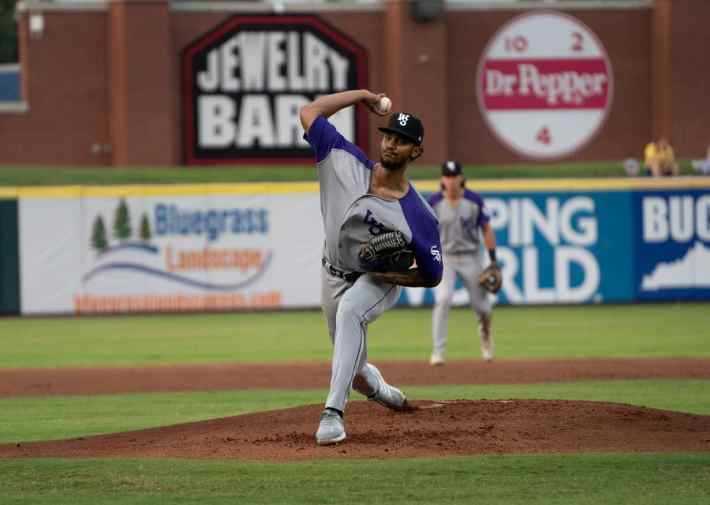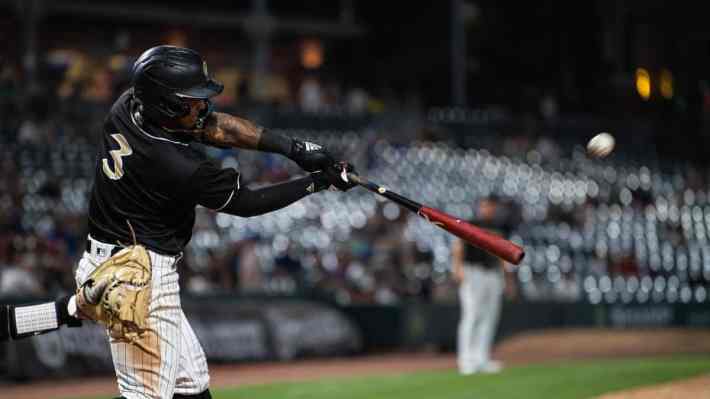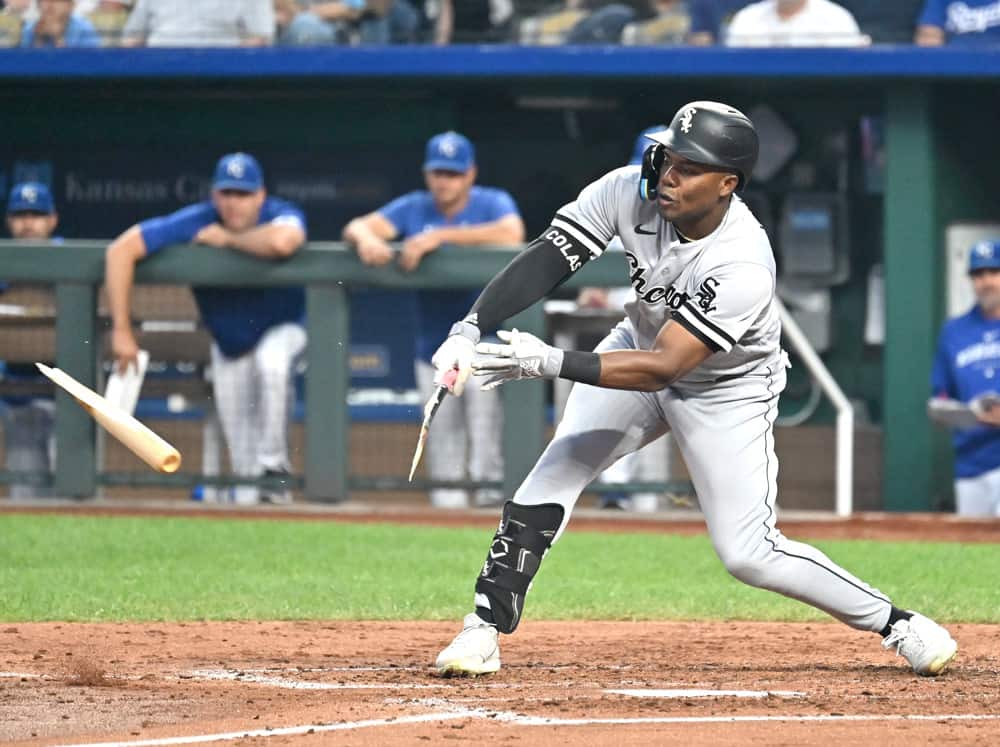The strongest part of the media conference announcing Chris Getz's ascension to general manager was Getz's opening statement. He basically said what he could say, which became evident when reporters asked him to elaborate on some areas, and he was limited by how little he could say.
But there was one line that stuck out to me, if only for the order of the elements involved.
"From this day forward, our organization will do whatever is necessary to be better in 2024 and beyond. It starts with a strong foundation. We will assess international, amateur and pro scouting, we will look at player development, sports science and medical departments, all while continuing to integrate analytics into every process that we have."
I'd normally caution that I might be reading/listening too closely, but it jumped out to me in real time that Getz listed international scouting first, because the franchise has often treated it like an afterthought. This season marked yet another signing period where the Sox failed to spend their entire international pool, and they ended up trading some of it away for a couple low-level Dodgers pitching prospects.
This also happens to be a season where we've really seen the limitations of Marco Paddy's strategy -- or the strategy imposed upon Marco Paddy.
In the three seasons after emerging from the two-year penalty they gladly served for blowing out their budget to sign Luis Robert Jr., the White Sox arranged their international classes around the signings of non-teenage Cuban players, and the developments of this year push the White Sox down a road that ends with nothing to show for their efforts.
In reverse chronological order:
2021: Oscar Colás ($2.7M)
The White Sox effectively cut short a disastrous rookie season for Colás by optioning him to Charlotte on Monday, and Pedro Grifol explained the move in no uncertain terms before the White Sox-Royals game was postponed.
‘‘We need him to completely clean up his whole game,’’ Grifol said. ‘‘I’m talking about baserunning, defensively. These are things I’ve spoken about all year. These are not new.’’ [...]
‘‘He’s an impactful player,’’ Grifol said. ‘‘He obviously has got the tools to impact this team. However, fundamentally, he still needs a lot of work. He’s got to go down there and take care of those fundamentals.’’
Grifol is correct, although it'd be easier to take him seriously if he applied any similar scrutiny to players with guaranteed contracts. He saves all his hardassery for the guys who haven't hit arbitration eligibility, and Colás may never reach those years at this rate.
Colás hit .216/.257/.314 over 263 plate appearances, a sample size that puts him just past the halfway point for qualifying for the batting title. That's bad enough, but throw in the other parts of his game, and he'd be on pace for -3 WAR if he played enough to qualify.
The Sox are so, so thin in the outfield, and Colás still has two options remaining, so it's premature to write Colás out of future seasons even if he seems like he's thoroughly entrenched in Grifol's doghouse. But he also turns 25 on Sunday, so he's not as young as his mistakes make him look.
2020: Yoelqui Céspedes ($2.05M), Norge Vera ($1.5M)
Céspedes, who turns one year older than Colás one week after his birthday, just made his Triple-A debut on Sunday, and it wasn't one he earned. He hit .214/.315/.326 in his second full season with Birmingham, and even if you only count the second half (when the Southern League ended its experiment with enhanced-grip baseballs that warped stats in favor of pitchers), his numbers only bump up to .248/.311/.358. He plays decent defense in center and it's a lot of fun to watch him throw, but an effective offensive approach continues to elude him.
But at least Céspedes looks like a typical minor-league player, even if he's more of an organizational sort. The Vera who lit up radar guns in the Dominican Summer League two seasons ago has lost both any noteworthy velocity and his concept of the strike zone, perhaps because he also struggles to stay healthy.

Vera came into the 2023 season motivated to build on his 2022, which had moments to build on despite the fact that he was limited to but a few dozen innings.
After his first season in the United States, the younger Vera has plenty of notes for himself already. He spent most of his offseason training at the team complex in Arizona under close watch, because Vera felt the lat strain that delayed his stateside debut and conspired to hold him to 35 1/3 innings in 2022 (spread out across 13 short starts), was essentially the same injury he had in 2021. He is not interested in a repeat. Vera said he’d like to clear 100 innings in 2023 and a sub-3.00 ERA is another one of his goals. He believes he better understands the work required now.
“You can notice the difference from my other years,” Vera said. Every young player who makes it to the majors goes through a period where the importance of having a strict physical and baseball routine gets drilled home. For Vera, it seems that time for him was the 2022 season, as he returned to the topic repeatedly.
Well, Vera threw just 15 innings in 2023, and in three starts, he couldn't even complete one inning. He walked five of the six batters he faced in his finale on Sunday, throwing just 10 of 35 pitches for strikes before Guillermo Quiróz pulled the plug.
Vera will enter his age-24 season next year with just 50⅓ stateside innings over two seasons, and he's walked 52 batters over that period. He went from being a near-consensus top-10 prospect to falling out of top 30s, and I get it. When you see him pitch now, there's no electricity to be found.
2019: Yolbert Sánchez ($2.5M)
At one point, I thought Sánchez was a near-lock for an audition with the White Sox because of his bat-to-ball abilities, as well as his often-slick defensive play at second base.
Then he reached Triple-A, where International League pitchers have spent the last two years knocking the bat out of his hands. He's somehow slugged just .336 over 218 games with Charlotte despite playing half his games in the league's most favorable home run environment.

Sánchez will turn 27 next spring, even though it will only be his fourth season stateside, and that illustrates the severe limitations of this particular approach to the international market.
Sánchez spent his age-22 season being way too old for the Dominican Summer League. He did so for tax purposes, but just about every international signing receives that particular financial benefit of making their pro debut in the DSL. Those players just happen to be 16, 17 or 18 years old, so it also makes sense from a developmental standpoint. For the White Sox, it's wasted time.
That limits the amount of runway a player has before doubts creep in, and Sánchez's was shortened even further by the canceled season of 2020. By the time he made his stateside debut, he was a 24-year-old with suspect contact quality and no long-term potential at shortstop, so he never got a chance to accrue any sort of trade value, even as a change-of-scenery type. The same thing applied to Céspedes and (to a lesser extent) Vera. The fact that the White Sox signed them inherently suggested that other teams valued them less, so the threat of depreciation is multiplied when they start off struggling.
The White Sox didn't continue this strategy for a fourth consecutive year based on their 2022-23 international class, but maybe not for a lack of trying. Their biggest signings were teenagers out of the Dominican Republic, but they only required $700,000. Moreover, they signed 25-year-old Cuban Josimar Cousin for $100,000 in May, and then they acquired Aldrin Batista and Máximo Martinez from the Dodgers with a portion of the league-leading $1.41 million they couldn't figure out how to spend.
That's why I want to see if there's indeed a reason why Getz mentioned the international side first. Paddy's time with the White Sox hasn't been a failure -- it couldn't possibly be with Robert and José Abreu on his ledger -- and he gets points for cleaning up the gigantic mess that preceded him. But once Major League Baseball enacted sufficient punishment to deter teams from paying the most promising international talent whatever the market demanded, it diminished whatever effects Paddy's pull had, and that strategy doesn't seem to work with second-tier talent.
Fittingly, that path runs parallel with Rick Hahn's career. Hahn gained a lot of credibility by striking incredibly valuable contract extensions with the team's best proven young talent, but once proven young talent started better understanding their worth, the White Sox had to both pay more and pay earlier. That meant the Sox actually incurred some risk this time around, and boy, are they feeling the brunt of that risk.
The White Sox had to move on from Hahn, and now we'll see if Getz changes course on the international side with regards to Paddy's position. If things stay the same on that front, Getz should get more questions, and he should prepare answers he can actually articulate.






